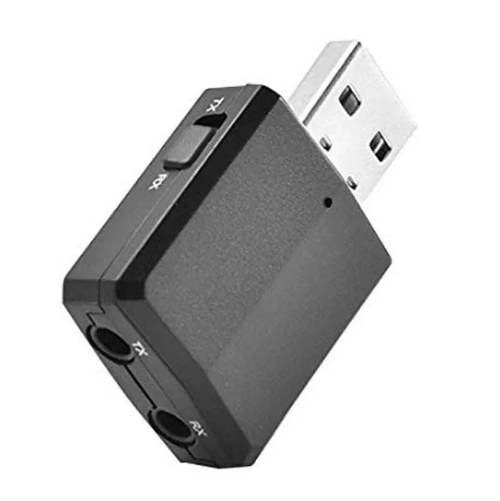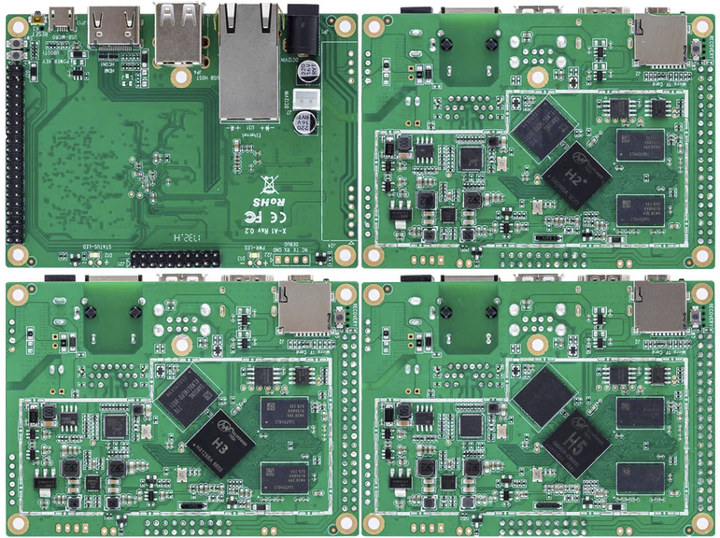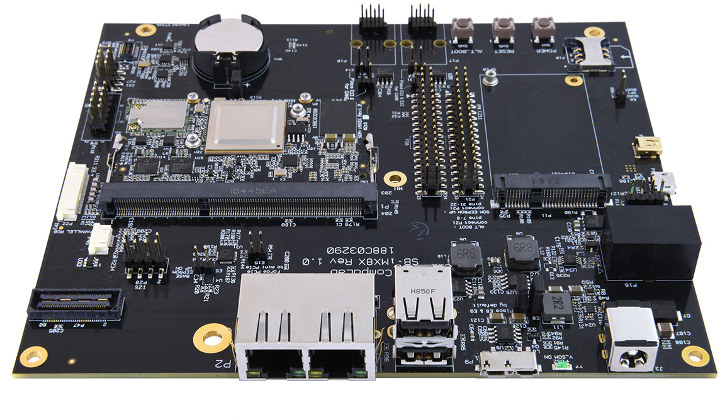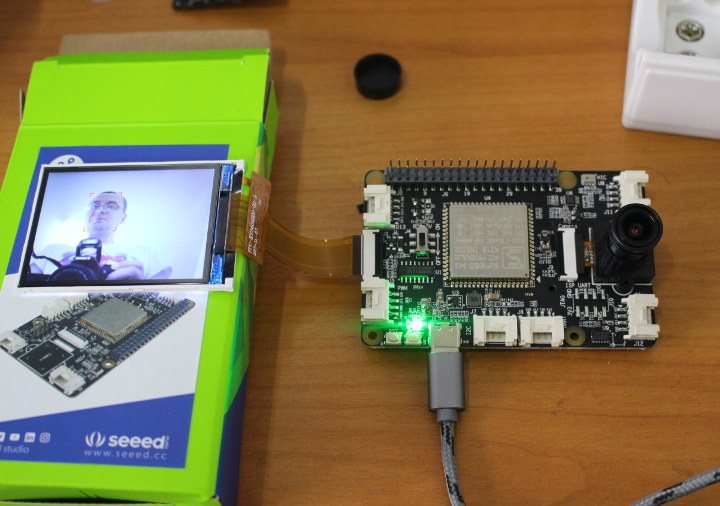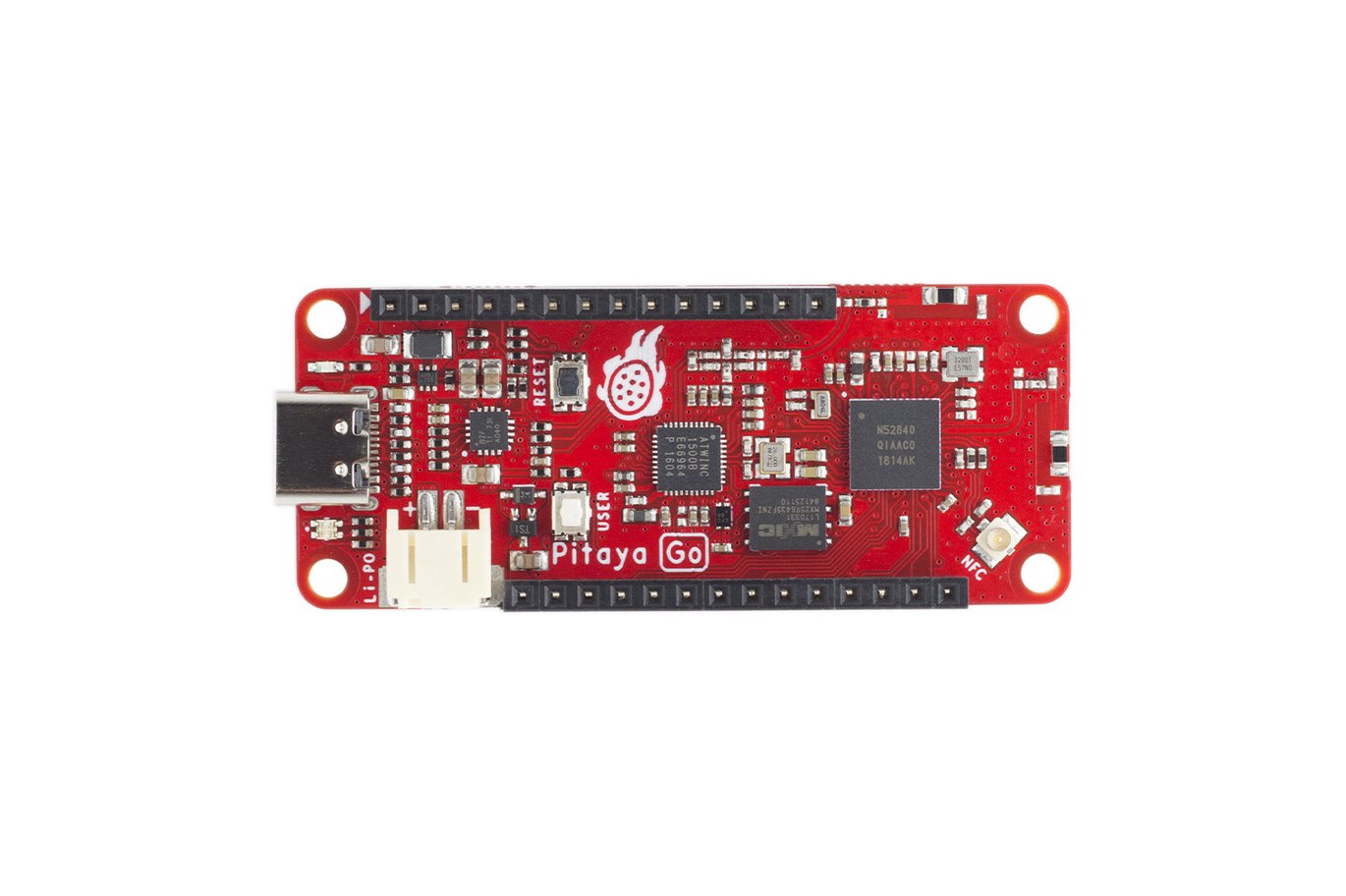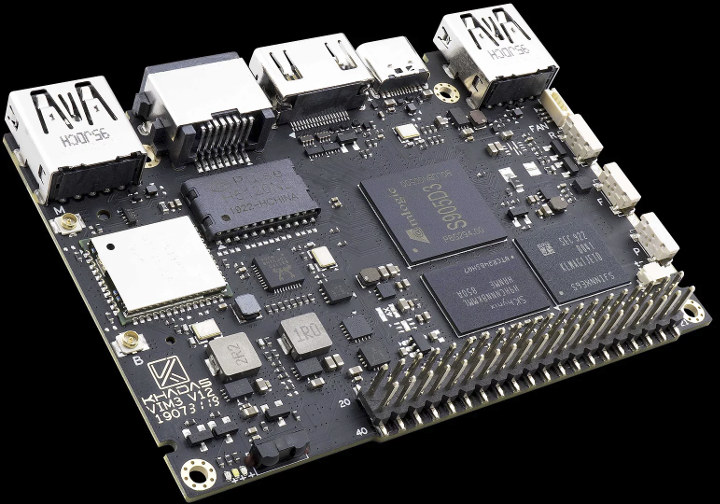Last year I wrote about a Bluetooth 5.0 audio amplifier board and the potential benefits of Bluetooth 5.0 for audio applications which include support for configurable periodic data broadcast which may improve power consumption, and reduction of reconnection times. It’s unclear to me whether those are clear advantages in practical terms but I’ve just noticed iMars Black, a Bluetooth 5.0 USB audio transmistter & receiver being sold on Banggood for $3.99. Bluetooth 5.0 (D00251) transmitter and receiver specifications: Connectivity Bluetooth 5.0 A2DP, and AVRCP (receiver mode only) Range – Up to 15m (line of sight) Pairing name: ZF-169 Audio ports – 3.5mm Tx and Rx audio jacks Misc – LED: red or Tx, blue for Rx; Button to switch between Tx and Rx modes Power Supply – 5V via USB connector Dimensions – 39x25x12mm The Bluetooth 5.0 USB audio dongle ships with two audio cables, and a user manual. There […]
Project-X A1-Series Production-Ready Pico-ITX SBCs are Powered by Allwinner Processors (Crowdfunding)
We already have plenty of Allwinner single board computers thanks to companies such as Shenzhen Xunlong Software with their Orange Pi boards, FriendlyELEC NanoPi boards, and Libre Computer Tritium SBCs. Those boards are fine for hobbyist’s project but may fall short when integrated into consumer products, although some products have already been launched with those board such as RetroEngine Sigma retro game console (Orange Pi), or Firewalla firewall appliance (NanoPi neo) ActPower Taiwan Ltd’s Project-X is a little different as it relies on Pico-ITX form factor targetting mass production of low volume manufacturing. Their first Project-X A1-series focus exclusively on Allwinner H-Series (H2+, H3, and H5) processor, but if the concept takes off they may launch boards equipped with processors from other silicon vendors. There are currently three Project-X A1 boards with the following key features and specifications: SoC (one or the other) Allwinner H2+ quad-core Cortex-A7 processor Allwinner H3 […]
GigaDevice Releases GD32V RISC-V MCU and Development Boards
A few years ago, we came across GigaDevice GD32 microcontroller compatible with STMicro STM32F103, but with a higher 108 MHz clock, and zero wait state internal flash. The MCU was also a drop-in replacement for the STMicro alternative since beside being software compatible, it was also pin-to-pin compatible. The company is now back with a new microcontroller, but it’s not Arm-based. Instead, GigaDevice GD32V is based on RISC-V open source architecture. GD32V General Purpose RISC-V MCU GigaDevice GD32V is a 32-bit RISC-V general-purpose MCU that targets industrial and consumer applications such as IoT, edge computing, artificial intelligence and “vertical industries”. The new GD32VF103 series RISC-V MCU family features 14 models with the following key specifications: Core – GD32VF103 32-bit rv32imac RISC-V “Bumblebee Core” @ 108 MHz Memory – 8KB to 32KB SRAM Storage – 16KB to 128KB flash Peripherals – USB OTG and CAN 2.0B I/O – 3.3V, 5V tolerant […]
Compulab CL-SOM-iMX8X SoM & SBC Feature NXP i.MX 8QuadXPlus Quad Core Cortex-A35 Processor
NXP i.MX 8X Cortex-A35 processor designed for automotive infotainment and a variety of industrial applications was officially announced in early 2017 with three parts: i.MX 8QuadXPlus with four Cortex-A35 cores, a Cortex-M4F core, a 4-shader GPU, a multi-format VPU and a HiFi 4 DSP i.MX 8DualXPlus with two Cortex-A35 cores, a Cortex-M4F core, a 4-shader GPU, a multi-format VPU and a HiFi 4 DSP i.MX 8DualX with two Cortex-A35 cores, a Cortex-M4F core, a 2-shader GPU, a multi-format VPU, and a HiFi 4 DSP In 2018, several companies unveiled i.MX 8X systems-on-module including Toradex Colibri iMX8X and Phytech phyCORE-i.MX 8X, and the processor was launched at the end of that year. There’s now another option with Compulab introducing CL-SOM-iMX8X module powered by NXP i.MX 8QuadXPlus processor, as well as SBC-IMX8X single board computer fitted with the module. CL-SOM-iMX8X System-on-Module Key features and specifications: SoC – NXP i.MX 8QuadXPlus quad-core Arm […]
Gemini Dual Screen Laptop is Made of Two Kay Lake-R Tablets (Crowdfunding)
[Update August 24, 2019: CNX Software has received a message claiming the project is a scam (identity theft): This is Li Yunjian, the Owner of following company : GST Communication Co., Ltd (Hongkong) 深圳市杰仕特通讯有限公司 (China Mainland) Our Website on Alibaba: https://chinagstgroup.en.alibaba.com/ This is a fraudster illegally using our company information to scam ] [Update October 2, 2019: Gemini Dual Screen Laptop crowdfunding campaign is up again, but references to “GST Communication” are gone] Note by CNXSoft: The campaign is under review and they have stopped taking contributions. I can only assume it’s a trademark issue because Intel did not like them to use the name “Gemini”. If it’s indeed the case, It should be resolved with a new name. We’ll remove this notice when/if the campaign comes back online. The Chinese company GST has been running a crowdfunding campaign for the Gemini, a dual-screen laptop, with the ability to be […]
Getting Started with Sipeed M1 based Maixduino Board & Grove AI HAT for Raspberry Pi
Last year we discovered Kendryte K210 processor with a RISC-V core and featuring AI accelerators for machine vision and machine hearing. Soon after, Sipeed M1 module was launched with the processor for aroud $10. Then this year we started to get more convenient development board featuring Sipeed M1 module such as Maixduino or Grove AI Hat. Seeed Studio sent me the last two boards for review. So I’ll start by showing the items I received, before showing how to get started with MicroPython and Arduino code. Note that I’ll be using Ubuntu 18.04, but development in Windows is also possible. Unboxing I received two packages with a Maixduino kit, and the other “Grove AI HAT for Edge Computing”. Grove AI HAT for Edge Computing Let’s start with the second. The board is a Raspberry Pi HAT with Sipeed M1 module, a 40-pin Raspberry Pi header, 6 grove connectors, as well […]
Pitaya Go is an IoT development board with multi-protocol wireless connectivity
One of the challenges in starting a new IoT project is the question of what connectivity to use. Depending on the nature of a project, there are several wired and wireless connectivity options that can be used to power a project and ensure it’s a success. We have WiFi, Bluetooth, Zigbee, Zwave, LoRa, ZigFox, Thread, NB-IoT, 3G/4G, and others. You can use from anyone, but which one to use is another thing because most development board only support 1 or 2 of those. Well, with the introduction of the Pitaya Go, you don’t have to worry so much about that decision. The Pitaya Go is an IoT development platform with multiprotocol wireless connectivity built-in. The Pitaya Go is based on the Nordic’s high-end multiprotocol SoC nRF52840 and the Microchip’s extremely low power Wi-Fi network controller ATWINC1500B. The nRF52840 SoC is the most advanced member of the nRF52 Series SoC family, and it […]
Khadas VIM3L Amlogic S905D3 SBC Targets HTPC Enthusiasts
Khadas recently launched VIM3 single board computer powered by Amlogic A311D that delivers the best performance among Arm-based SBC’s I have tested myself, and for instance, Amlogic A311D is significantly faster than Rockchip RK3399, and the platform is quite suitable for Android gaming. All that power comes at a price however, as Khadas VIM3 starts at $99.99 with 2GB RAM and 16GB storage. That’s fine if you’re going to leverage the features and power of the board, but for some applications, it’s quite expensive. One of those applications is HTPC, as in a world of sub-$50 TV boxes, $100 is a bit too much for watching video content. So the Khadas team is currently developing Khadas VIM3L based on Amlogic S905D3 processor that should provide an excellent platform for HTPC. Khadas VIM3L specifications known so far: SoC – Amlogic S905D3-N0N quad-core Cortex-A55 processor @ 1.9GHz with Arm Mali-G31MP2 GPU up […]


